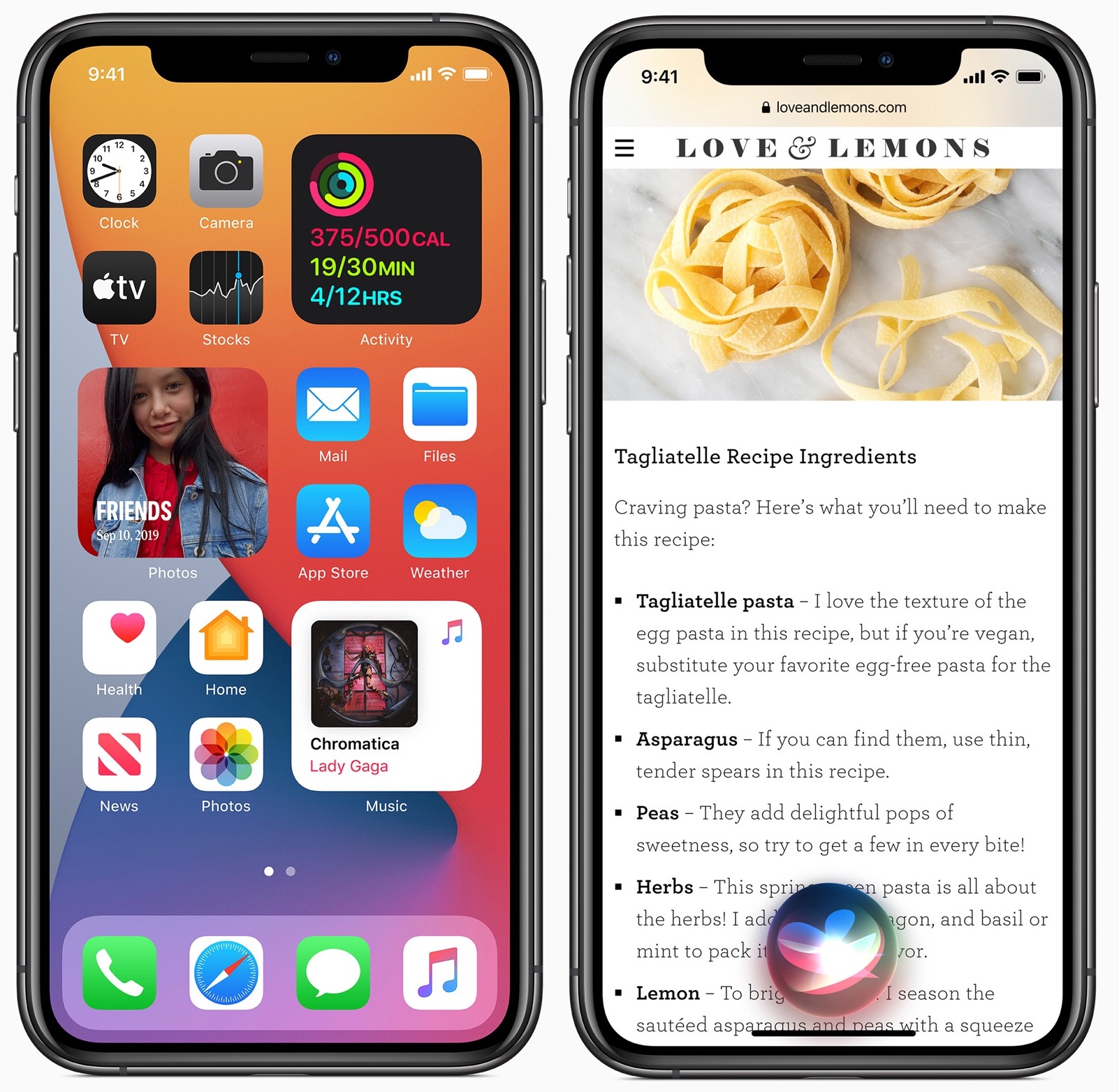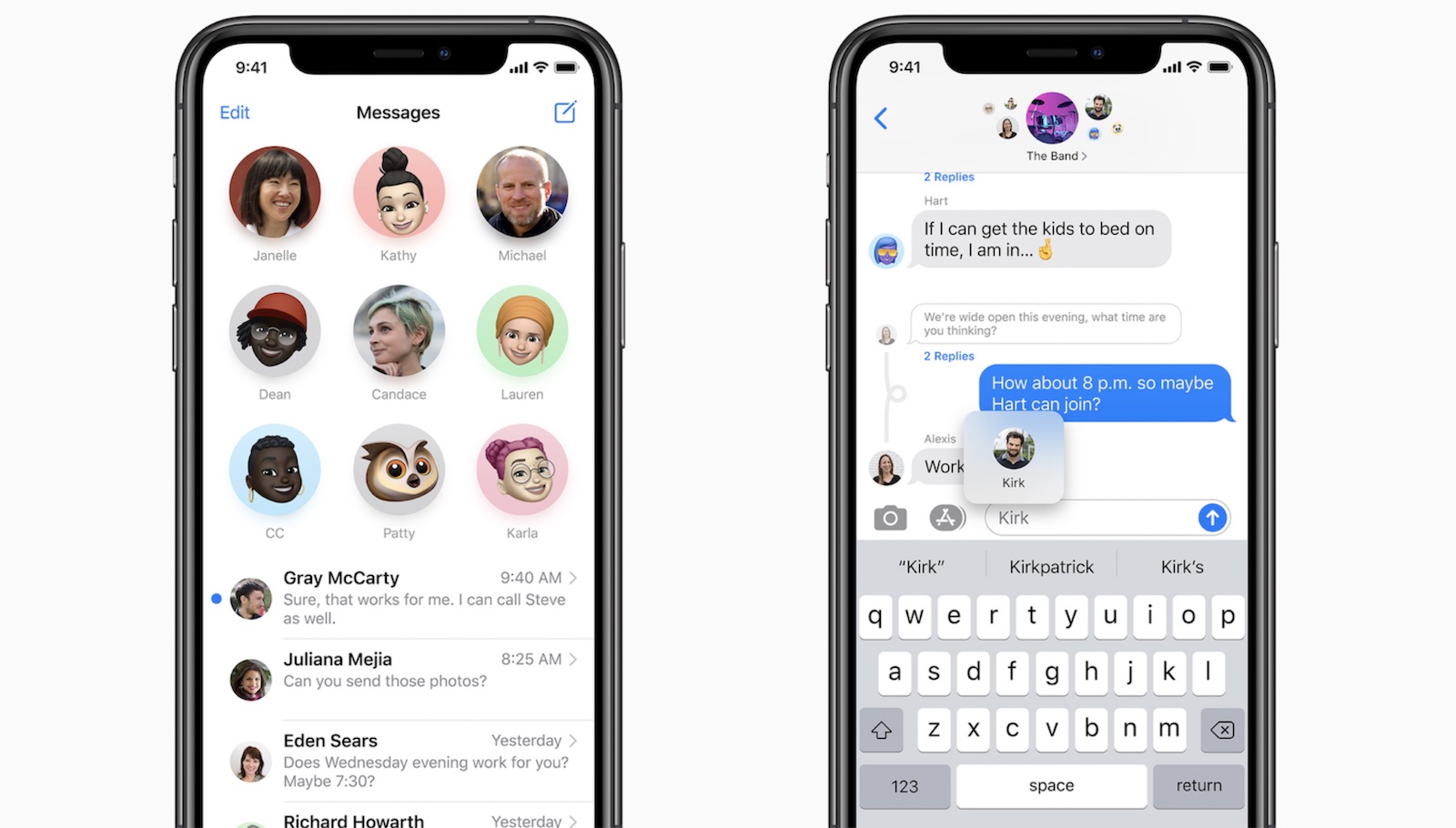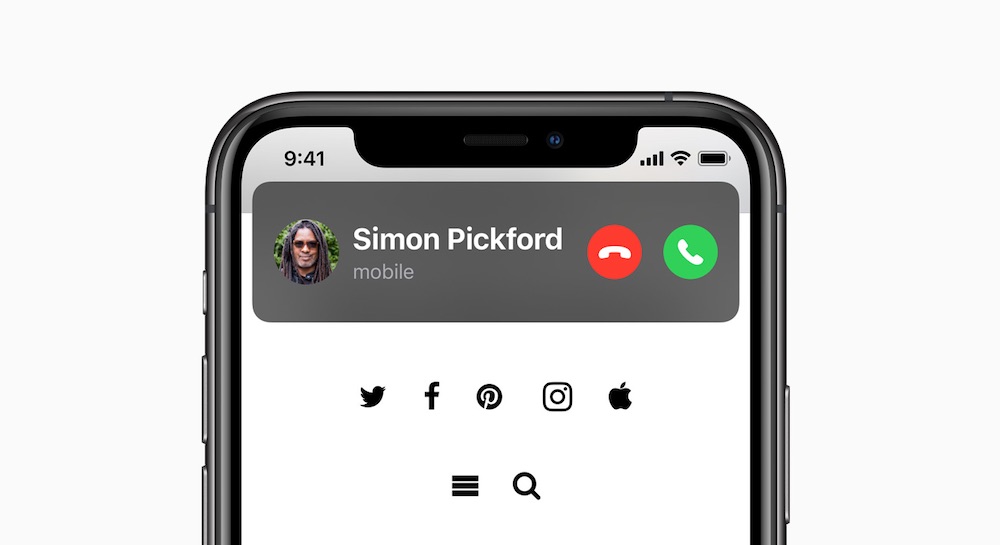iOS 14: Everything you need to know
Apple in June 2020 introduced a new version of its iOS operating system, iOS 14, which was released on September 16, 2020. iOS 14 was one of Apple’s biggest iOS updates to date, introducing Home screen design changes, major new features, updates for existing apps, Siri improvements, and many other tweaks that streamline the iOS interface.
First and foremost, iOS 14 brings a redesigned Home Screen that includes support for widgets for the first time. Widgets can be dragged from the Today view right onto the Home Screen, and can be pinned in different sizes.
With a Smart Stack feature, the iPhone can use on-device intelligence to surface the right widget based on time, location, and activity. Each Home Screen page can display widgets customized for work, travel, sports, and more. The Today section where widgets are housed has also been redesigned, and there’s a widgets gallery where users can choose new widgets from apps and customize those widgets.
Swiping all the way to the end of the app pages on an iPhone opens the new App Library, which is an interface that shows all of the apps on your iPhone to see everything at a glance. Apps are organized into your folder system, but there are also Apple-created folders like Suggestions and Apple Arcade that intelligently surface apps. New app downloads can be added to your Home Screen or kept in the App Library to keep your Home Screen cleaner.
New space-saving measures mean incoming phone calls and Siri requests no longer take over the entire screen. Phone calls (and FaceTime/VoIP calls) show up in a small banner on the iPhone’s display, while activating Siri shows a small animated Siri icon at the bottom of the screen.
With a Picture in Picture mode, users can watch videos or talk on FaceTime while also using other apps at the same time, with FaceTime or a video playing in a small window that can be resized and relocated to any corner of the iPhone’s screen.
Siri is smarter in iOS 14 and can answer a greater range of questions with info pulled from across the internet, and Siri can also send audio messages. Keyboard dictation runs on device, adding an additional layer of privacy for dictated messages.
Apple added App Clips to iOS 14, letting users take advantage of some app features without needing to download the full app. App Clips can let you do things like rent a scooter, purchase a coffee, make a restaurant reservation, or fill a parking meter just by scanning a code, with no need to download a full app.
Apple describes App Clips as just a “small part of an app experience” designed to be found in the moment it is needed. App Clips work through Apple-designed App Clip codes, NFC tags, or QR codes, and can also be shared in Messages or from Safari.
Speaking of the Messages app, Apple now lets users pin an important conversation so that it stays at the top of the app. Messages can be pinned with a simple swipe to the right on any chat. A new inline replies feature can be used to reply to a specific message in a conversation, which is especially useful in group chats.
For group conversations, Apple added an @mention feature, which means a group chat can be muted but sends a notification when a user’s name is mentioned. Group chat photos can be customized with an image or an emoji, and the icons for each person at the top of a conversation make it clear who was last speaking.
There are new Memoji options that include additional hairstyles, headwear, face coverings, and ages, plus new Memoji stickers for hug, fist bump, and blush. Memoji are more expressive than ever thanks to revamped facial and muscle structure.
Paired with watchOS 7, iOS 14 lets parents set up and manage cellular Apple Watches for their kids through Family Setup, designed to let kids use an Apple Watch without the need for an iPhone.
For the Health app, Apple has added support for Sleep Tracking on Apple Watch, plus a Health Checklist for managing health and safety features (Emergency SOS, Medical ID, Fall Detection, and ECG) and an addition to help users better understand how audio levels can impact hearing health.
In the Weather app, there’s info on severe weather events, a next-hour precipitation chart, and minute-by-minute precipitation readings when rain is forecast, all features adopted from Apple’s Dark Sky acquisition.
The Apple Maps app has cycling directions for bike commuters and cyclists, with the directions taking into account elevation, how busy a street is, and whether there are stairs along the route. For those who own electric vehicles, there’s an option to route with EV charging stops customized for current vehicle and charger types.


A curated Guides feature lists interesting places to visit in a city for finding new restaurants and attractions. Guides are created by trusted brands like The Washington Post, AllTrails, Complex, Time Out Group, and more.
Digital car keys let users unlock or start their car with an iPhone or Apple Watch, and next year, with the U1 chip, the car keys lets users unlock cars without taking the iPhone out of a pocket or bag. Car keys can be shared through Messages and disabled via iCloud if an iPhone is lost.
CarPlay lets users set wallpapers and it supports new app types for parking, electric vehicle charging, and quick food ordering.
The Home app is smarter with automation suggestions and Control Center quick access buttons, plus an Adaptive Lighting feature lets HomeKit lights adjust their color temperature throughout the day. On-device Face Recognition lets cameras and video doorbells tell users exactly who is at the door (based on People saved in Photos), and HomeKit Secure Video cameras support Activity Zones for the first time.
There’s a new Apple-designed Translate app that provides text and voice translations to and from 11 languages. An On-Device Mode lets languages be downloaded for on-device translations only, and a Conversation Mode speaks translations aloud so users can talk with someone that speaks a different language, and it automatically detects the language being spoken and translates appropriately.
Supported languages include Arabic, Chinese, English, French, German, Italian, Japanese, Korean, Portuguese, Russian, and Spanish.
Updated privacy protections require developers to get permission before accessing devices on a local network, and there are new options for limiting access to select photos or providing apps with only approximate location data. All apps are also required to get user permission before tracking them across websites, and new icons show up on the Home Screen when an app is using a camera or microphone.


App Store product pages now include summaries of developers’ self-reported privacy practices provided in an easy-to-read format, and Apple is adding a feature that lets existing accounts to be updated to Sign in with Apple. In Safari, Apple provides a Privacy Report that lets you know which website trackers are being blocked.
Apple is also adding Safari password monitoring that lets users know if a saved password has been involved in a data breach, along with a built-in Safari translation feature for webpages.
With iOS 14, AirPods can seamlessly and automatically switch between Apple devices with automatic device switching, and for AirPods Pro, there’s a new spatial audio feature for surround sound, complete with dynamic head tracking. iOS 14 also provides notifications when the battery in AirPods or AirPods Pro is close to dying.
The Find My app in iOS 14 includes support for third-party products and accessories, so item trackers like Tile can be located directly in the Find My app. No third-party trackers use the functionality as of yet.


There are dozens of tweaks and changes for other apps. Apple Arcade supports cross-platform saving, developers can make App Store subscriptions available for families, the Camera app has a new Exposure Compensation control, Photos has new organizational options, Reminders has smart suggestions and quick entry, and, for the first time, third-party email and browser apps can be set as default.
iOS 14 is compatible with the iPhone 6s and later, which means it runs on all devices able to run iOS 13, and it is available for download as of September 16, 2020.
Note: See an error in this roundup or want to offer feedback? Send us an email here.






